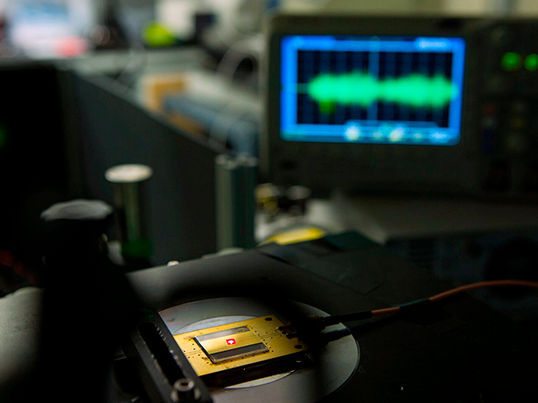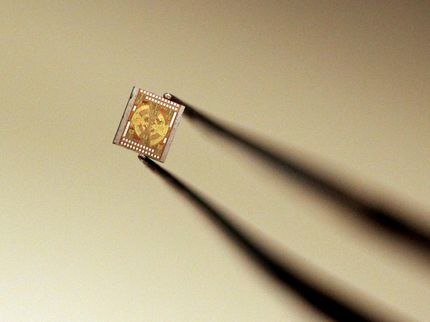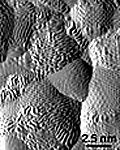The world’s tiniest radio
Researchers from the Harvard John A. Paulson School of engineering and Applied Sciences (SEAS) have made the world’s smallest radio receiver, built out of an assembly of atomic-scale defects in pink diamonds.

Researchers from the Harvard John A. Paulson School of Engineering and Applied Sciences have developed a tiny radio — built with atom-sized imperfections in diamonds — that can operate in a number of environments, from the harsh conditions of space to an organ in a living body.
Eliza Grinnell/SEAS Communications
This tiny radio, whose building blocks are the size of two atoms, can withstand extremely harsh environments and is biocompatible, meaning it could work in places as varied as a probe on Venus to a pacemaker in a human heart.
The research was led by Marko Lončar, the Tiantsai Lin Professor of Electrical Engineering at SEAS, and graduate student Linbo Shao, and was published in the journal Physical Review Applied .
The radio uses tiny imperfections in diamonds called nitrogen-vacancy (NV) centers. To make NV centers, researchers replace one carbon atom in a tiny diamond crystal with a nitrogen atom and remove a neighboring atom — creating a system that is essentially a nitrogen atom with a hole next to it. NV centers can be used to emit single photons or detect very weak magnetic fields. They have photoluminescent properties, meaning they can convert information into light, making them powerful and promising systems for quantum computing, phontonics, and sensing.
Radios have five basic components: a power source, a receiver, a transducer to convert the high-frequency electromagnetic signal in the air to a low-frequency current, a tuner, and a speaker or headphones to convert the current to sound.
In the Harvard device, electrons in diamond NV centers are powered, or pumped, by green light emitted from a laser. These electrons are sensitive to electromagnetic fields, including the waves used in FM radio. When NV center receives radio waves. it converts them and emits the audio signal as red light. A common photodiode converts that light into a current, which is then converted to sound through a simple speaker or headphone.
An electromagnet creates a strong magnetic field around the diamond, which can be used to change the radio station, tuning the receiving frequency of the NV centers.
Shao and Lončar used billions of NV centers to boost the signal, but the radio works with a single NV center, emitting one photon at a time, rather than a stream of light.
The radio is extremely resilient, thanks to the inherent strength of diamond. The team successfully played music at 350 degrees Celsius.
“Diamonds have these unique properties,” said Lončar. “This radio would be able to operate in space, in harsh environments and even the human body, as diamonds are biocompatible.”
The research was coauthored by Mian Zhang, Matthew Markham, and Andrew M. Edmonds, and was supported in part by the STC Center for Integrated Quantum Materials.
Original publication
Linbo Shao, Mian Zhang, Matthew Markham, Andrew M. Edmonds, and Marko Lončar; "Diamond Radio Receiver: Nitrogen-Vacancy Centers as Fluorescent Transducers of Microwave Signals"; Phys. Rev. Appl.; 2016
Most read news
Original publication
Linbo Shao, Mian Zhang, Matthew Markham, Andrew M. Edmonds, and Marko Lončar; "Diamond Radio Receiver: Nitrogen-Vacancy Centers as Fluorescent Transducers of Microwave Signals"; Phys. Rev. Appl.; 2016
Topics
Organizations

Get the analytics and lab tech industry in your inbox
By submitting this form you agree that LUMITOS AG will send you the newsletter(s) selected above by email. Your data will not be passed on to third parties. Your data will be stored and processed in accordance with our data protection regulations. LUMITOS may contact you by email for the purpose of advertising or market and opinion surveys. You can revoke your consent at any time without giving reasons to LUMITOS AG, Ernst-Augustin-Str. 2, 12489 Berlin, Germany or by e-mail at revoke@lumitos.com with effect for the future. In addition, each email contains a link to unsubscribe from the corresponding newsletter.
























































